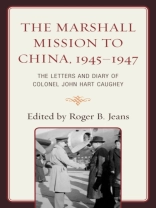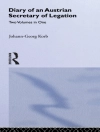This book breaks new ground in our understanding of a pivotal period in the history of American foreign policy, the early Cold War, and the struggle for dominance in China between the Nationalists and Communists. The famous Marshall Mission to China has been the focus of intense scrutiny ever since General George C. Marshall returned home in January 1947 and full-scale civil war consumed China. Yet until recently, there was little new to add to the story of the failure to avert wa...
This book breaks new ground in our understanding of a pivotal period in the history of American foreign policy, the early Cold War, and the struggle for dominance in China between the Nationalists and Communists. The famous Marshall Mission to China has been the focus of intense scrutiny ever since General George C. Marshall returned home in January 1947 and full-scale civil war consumed China. Yet until recently, there was little new to add to the story of the failure to avert war between the Chinese Nationalists, under Chiang Kai-shek, and the Chinese Communists, led by Mao Zedong. Drawing on a newly discovered insiders account, Roger B. Jeans makes an invaluable contribution to our understanding of Marshalls failed mediation effort and the roles played by key Chinese figures. Working from the letters and diary of U.S. Army Colonel John Hart Caughey, Jeans offers a fresh interpretation of the mission. From beginning to end, Caughey served as Marshalls executive officer, in effect his right-hand man, assisting the general in his contacts with the Chinese and drafting key documents for him. Through his writings, Caughey provides a rare behind-the-scenes view of the generals mediation efforts as well as intimate glimpses of the major Chinese figures involved, including Chiang Kai-shek, Madame Chiang, and Zhou Enlai. In addition to daily contact with Marshall, Caughey often rubbed shoulders with these major Nationalist and Communist figures. As a meticulous eyewitness to history in the making, Caughey offers crucial insight into a key moment in post-World War II history.












